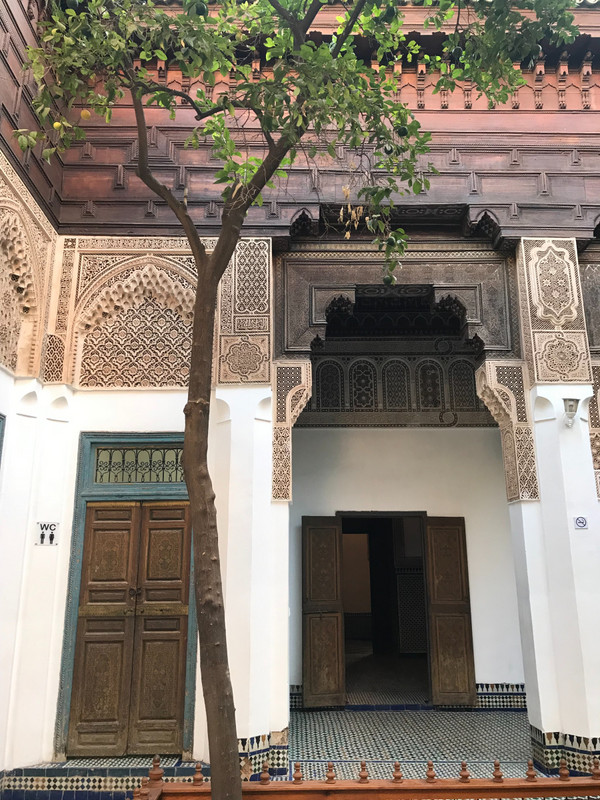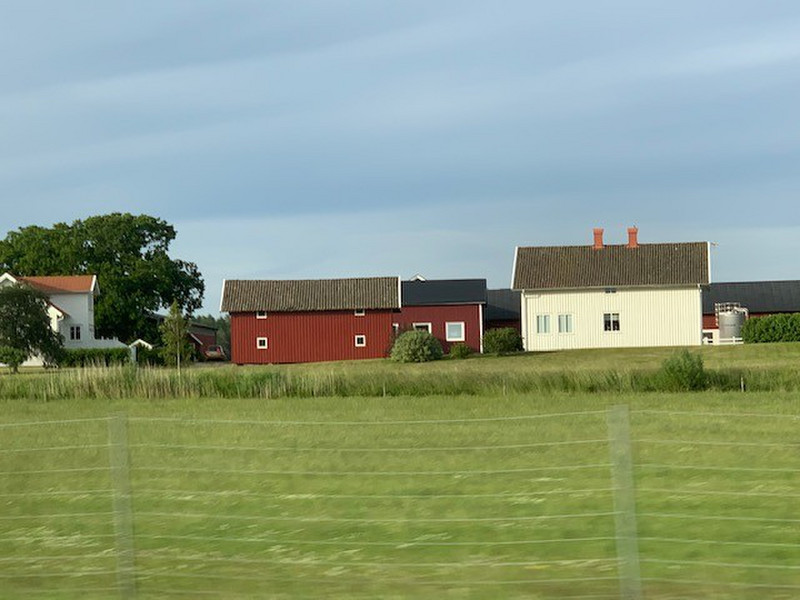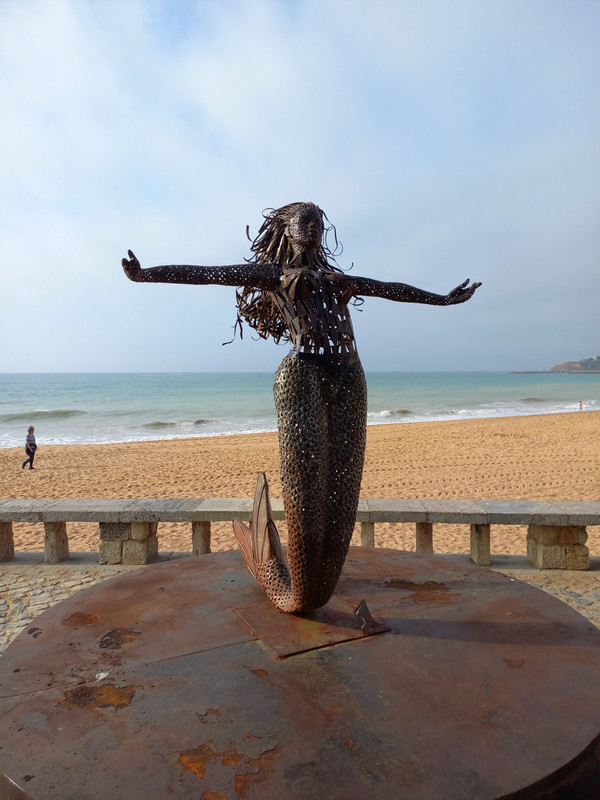Good weather followed us every day so far, and Day 10 of our Moroccan adventure was no different although on this day the humidity could be keenly felt. An ambitious agenda was planned for our first full day in Marrakesh which is not surprising considering how much there is to see and do here.
As mentioned in my preceding blog, the noise from the heavily congested roundabout traffic circle next to our hotel could have ruined a good nights sleep, but didnt thanks to the two pairs of heavy sliding doors leading to our balcony so our room was quiet.
We were joined at breakfast in the Le Rossini International Restaurant by another member of our group. A breakfast is served here each morning and included a variety of salads, cheeses, cold cuts, fruit and cereal could be supplemented by several hot entrees ordered on the spot from the cook stationed near the restaurant entrance – eggs any style, along with msemen, etc. Unfortunately the coffee dispensed from a machine here was somewhat disappointing and a good jolt of caffeine would have been welcomed.
originally the Jewish residential and business quarter of Marrakesh. The Arabic term, mellah, is said to mean salt or salt marsh and so was applied to the Jewish quarter as their wealth was acquired through the salt trade. By the time we visited, streets and shops in the mellah were already busy with the mornings hustle & bustle of the days business.
Our guide, Larbi, pointed out architectural differences which distinguish the mellah from other sections of the medina. Here narrow streets are lined with buildings with ground level shops or cafes while the second story houses apartments, many featuring fanciful balconies. The balconies reflect the heritage of Moroccos original Jewish population which migrated here in the late 15th century after being expelled from Spain.
The majority of mellahs Jewish residents have moved to Marrakeshs Guliz neighborhoods although some businesses, and synagogues (including the 1492 Slat Al Azama Synagogue), a cemetery, and streets with Jewish names still remain there.
The mellah is quite close to the lovely Bahia Palace and a short walk through unexpectedly gritty back lanes brought us to the unimpressive arched gate which belies the beauty of the palace itself. Bahia means
brilliance and this palace certainly seems to live up to its name. Built in the 19th century for the Grand Vizier, Si Moussa, to the Alaouite Sultan. Si Moussas successor, Abu Bou Ahmed, a humble as a black slave who rose to the 2nd most powerful position in the kingdom while defying the odds, substantially enlarged the palace into what we see today.
I was surprised to learn that the palace and grounds covers nearly 20 acres, and includes an astounding 150 rooms, gardens, courtyards, and more. Sadly, when Abu Bou Ahmed died in 1900, the palace was looted and its treasures stolen which is why the rooms we saw were devoid of any furniture or artwork that are not part of the structure itself.
In 1912, the ruling French Protectorate took over the palace and used it as the Governors Residence. It wasnt until the early 21st century that real restoration of the palace began to take place. Looking at it now, its difficult to imagine the immense amount of work and craftsmanship required to restore this incredible place it is a magnificent piece of art.
to me -- the intricate, carved stucco, marquetry and zouak (painted cedar wood) ceilings with the painted shutters, doors, zellige/zillij tile, and inscriptions surrounding pediments.
Here the zouak took center stage. Room ceilings, large and small, were uniquely shaped with amazing painted patterns and designs. Lovely ceiling pendant lamps added light in rooms without windows.









